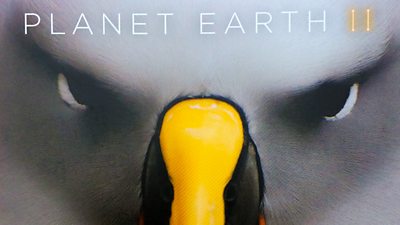
There is little doubt that, amongst the broadcast TV community, 2016 will be remembered as the year the industry delivered high dynamic range (HDR) television; and it makes us immensely proud to have played a key part in that. At the start of the year few people had heard about Hybrid Log-Gamma (HLG) HDR. But we end the year with a , and some amazing audience feedback.
As some of you will have read, the solution, jointly developed by the ±«Óătv and , was specifically designed to allow a straightforward migration to HDR-TV production. But even if the technology is straightforward, developing the suite of standards necessary to allow HLG programme production, programme delivery and distribution to the home to become a reality, was anything but straightforward!
from a series of scientific experiments to the . These were designed to address the last remaining issues ahead of the inclusion of HLG in – the worldwide standard for high dynamic range television production and programme exchange. On Friday 5th February, after one last week of intense discussion, negotiation and debate, and three years after the “kick-off” meeting that launched our research, Working Party 6C finally – approved and published on 5th July 2016. A summary of the findings from those key experiments was published in the , and more details were presented in .
Ordinarily, following the approval of an ITU-R recommendation, one might be able to sit back and relax for a short while to allow the industry to digest the new standard before the launch of any new services. Some of you may remember that , the standard for HDTV, was first published in 1993 – but it was almost 13 years before HDTV services launched in the UK. The world has moved on since then. With HDR televisions already on sale, and growing interest from both programme makers and consumers in the new technology, it was essential to complete the remaining technical standards as quickly as possible to ensure the HDR televisions finding their way in to viewers’ homes are standards compliant, and can access HDR-TV content as services are launched.
After a mammoth effort, (the organisation responsible for specifying the technical standards for television and set-top box receivers in Europe) published their “Blue Book” specification for both UHD HDR and UHD HFR () TV services in November. We are supporting a similar effort in , as it’s in all our interests to have as much commonality as possible in the standards that are used around the world.
The final piece of the jigsaw was completed earlier this month, when HDMI extended their 2.0b specification to support HLG.
But standards alone are not sufficient to ensure the successful adoption of a new system – particularly when, in the case of high dynamic range TV, there are two options to choose from in BT.2100: HLG and PQ (Perceptual Quantizer). So one of the most rewarding activities for the team has been working with to trial and demonstrate HLG content at industry events throughout the year.
We are fortunate that are popular around the world. So, just as they did for the launch of HD with the original series, ±«Óătv Worldwide were interested in providing the additional funding to allow to be produced in UHD and HDR – protecting the long-term value of their investment.

The HDR Planet Earth II test clips were first shown at in Cannes in April, where they caused quite a stir. Off the back of the positive feedback from MIP, and a series of internal ±«Óătv and ±«Óătv Worldwide demonstrations, funding was confirmed to produce all six episodes of Planet Earth II in HLG HDR. It's those same MIPTV Rain and Jaguar clips that we are using in
But delivering an HDR production “eco-system” is more than just standards and content. We need to be able to convert content to and from the HLG production format. So in April of this year we presented a paper at , illustrating how those mathematical format conversions should be performed – we are delighted to see those format conversions from BT.709 SDR to BT.2100 HLG HDR and between the HLG and PQ HDR production formats are now beginning to appear in products. We extended those mathematical conversions with further research, developing algorithms for SDR “up-conversion” and HDR “down-conversion”, each of which requires a degree of subjective optimisation. Both solutions were presented at the in Hollywood in October. We also made HLG test content available under licence to allow others to develop HLG solutions of their own.
Transitioning to HDR-TV is the biggest change to television since the introduction of colour 50 years ago. So, in the space of a blog, it’s simply not possible to do justice to the hard work of all of the ±«Óătv R&D teams, our NHK colleagues and those in industry who have contributed to and supported our standardisation efforts. But we should not forget our colleagues in that is used by DVB to identify HLG content, those in the who developed the DPP specification for the delivery of pre-recorded HDR programmes and the who are developing the standards for HDR live production over an IP-based infrastructure.
As I write this blog, in addition to the ±«Óătv iPlayer trial, there are four experimental UHD HDR TV services available on satellite in Europe, and they all use the HLG standard. The only commercial HDR-TV service that we are aware of, , also uses HLG. As we enter 2017, let’s hope that a few more of those HDR trials transform in to real services, and we can start enjoying at home, some of the spectacular HDR content we’ve seen in our research labs.
- -
- from the ±«Óătv Academy including:
-

Broadcast and Connected Systems section
Broadcast & Connected Systems primarily focuses on how ±«Óătv content reaches our viewers through broadcast and Internet delivery. This involves the whole broadcast chain from playout, through coding and distribution to consumption on the end-user's device. Our work typically covers a period from now through to 3 years out from deployment.
